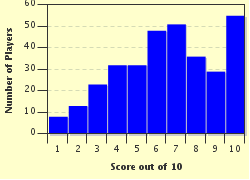Quiz Answer Key and Fun Facts
1. Martin Bormann is one of the less well known Nazi party members but is commonly considered to have had more power than any other Nazi except Adolf Hitler. He was, primarily, head of the party chancellery, but what position made him a close friend and confidant of Hitler?
2. Bormann was born at the turn of the 19th to the 20th century - June 17, 1900. He was born in Halberstadt and had an early job which has close parallels to that of his future colleague in crime, Heinrich Himmler. What type of job did Bormann have?
3. Bormann's 'silent' personality was his greatest tool. However, hidden beneath that dormant exterior lay a vicious murderer. He assisted in the brutal murder of his own former elementary school teacher. Who was Bormann's collaborator?
4. In 1924, Bormann was incarcerated for his part in the murder of Walter Kadow, but how long was his sentence?
5. Hitler delegated considerable power to Bormann, so much so, that all promotions and appointments went through his office. He was a man obsessed with the security of the Third Reich and told regional leaders known as gauleiters, whom he also controlled, to do which of the following in 1942?
6. As well as his hatred of the Jews, the intense racist that was Bormann also hated the Slavs. Which of the following did he call this "inferior" race?
7. As an example of his seemingly unlimited power, Bormann signed a decree on July 1, 1943, stating that someone should have full control over the treatment of the Jews that came into contact with the Gestapo. Who was this man?
8. Bormann's responsibilities within the Third Reich mounted and mounted. To what position was Bormann appointed in October, 1944?
9. Martin Bormann was the witness to Hitler's marriage to Eva Braun and was present in the bunker at the subsequent suicide.
10. After the suicide of Adolf Hitler on April 30, 1945, the details of Martin Bormann's life became extremely dubious and for decades nobody knew for sure what had become of him. However, the ruling at Nuremberg is something that historians are certain of. What sentence was he given?
Source: Author
jonnowales
This quiz was reviewed by FunTrivia editor
bloomsby before going online.
Any errors found in FunTrivia content are routinely corrected through our feedback system.

